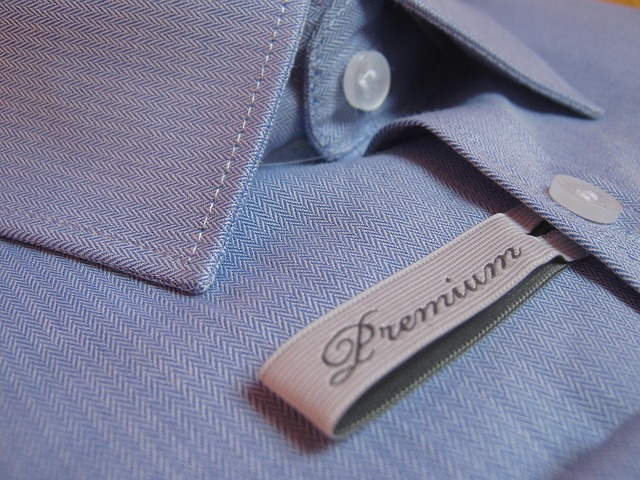Exploring Different Types of Blouses and How They Are Made
Blouses come in many styles, fabrics, and designs. This article explains how blouses are made, the materials used, and the ways different styles are worn. Learn about sleeve shapes, collars, and patterns to see how blouses have evolved and why they remain popular in wardrobes around the world.

Classic Blouse Styles for Women
The world of women’s blouses encompasses several timeless styles that have maintained their popularity through changing fashion trends. The button-down blouse, characterized by its full-length front opening with buttons, offers versatility for professional settings. The peplum blouse, featuring a gathered or flared section at the waist extending over the hips, creates a flattering silhouette that emphasizes the waistline. Wrap blouses provide adjustability and comfort with their overlapping front panels secured by ties or buttons. The peasant blouse, with its loose fit, gathered neckline, and often embroidered details, provides a bohemian aesthetic. Finally, the tunic blouse, longer in length and typically worn untucked, offers comfort without sacrificing style. Each of these classic styles serves different purposes in a woman’s wardrobe, from formal business meetings to casual weekend outings.
Popular Blouse Designs Across Cultures
Blouse designs vary significantly across cultures, reflecting regional aesthetics, traditions, and practical considerations. The cheongsam-inspired blouse from Chinese culture features a distinctive mandarin collar and fitted silhouette. Indian fashion contributes the choli blouse, often worn with saris, characterized by its cropped length and intricate embellishments. Latin American influences bring vibrant embroidered blouses like the Mexican huipil, featuring colorful hand-stitched patterns. European traditions offer the dirndl blouse from Alpine regions, with its square neckline and puffed sleeves. Japanese-inspired designs include kimono-style blouses with wide sleeves and wrapped fronts. These cultural variations demonstrate how blouse designs adapt to different contexts while maintaining their essential function as upper body garments.
How Blouses Are Made: Manufacturing Process
The creation of a blouse involves several distinct stages, beginning with design conceptualization where sketches are transformed into patterns. Material selection follows, considering factors like drape, texture, and care requirements. The cutting process requires precision as fabric pieces are cut according to pattern specifications. Assembly involves stitching these pieces together, typically starting with darts and pleats for shaping, followed by joining shoulder seams, attaching sleeves, and closing side seams. Collar and cuff attachment requires careful handling to ensure symmetry and proper fit. Button placement and buttonhole creation must be precisely measured and executed. Quality control checks ensure consistent sizing and construction. Finally, finishing processes may include pressing, adding labels, and packaging. Industrial manufacturing employs assembly lines with specialized stations for each step, while artisanal production may have a single craftsperson completing the entire process.
Blouse Materials and Fabrics
Blouses utilize diverse materials, each offering unique properties and aesthetic qualities. Cotton remains popular for its breathability and comfort, making it ideal for everyday wear. Silk provides luxury with its smooth texture and lustrous appearance, though it requires delicate care. Polyester offers durability and wrinkle resistance at an affordable price point. Rayon mimics natural fibers while providing excellent drape. Linen delivers exceptional coolness and breathability but wrinkles easily. Specialty fabrics include georgette and chiffon, which create flowing, sheer effects perfect for dressy occasions, and jersey knits that provide stretch and comfort. Material selection significantly impacts a blouse’s appearance, comfort, maintenance requirements, and longevity. Fabric weight also determines seasonality, with lighter materials suitable for warm weather and heavier fabrics providing warmth in cooler conditions.
Different Types of Blouses Based on Sleeve Designs
Sleeve variations dramatically alter a blouse’s aesthetic and functionality. Cap sleeves extend just over the shoulder, offering minimal coverage for warm weather. Bell sleeves flare dramatically from the elbow to wrist, creating a romantic silhouette. Raglan sleeves extend to the neckline rather than ending at the shoulder, providing greater movement. Dolman or batwing sleeves feature extended width from shoulder to waist, creating a dramatic drape. Bishop sleeves remain fitted at the shoulder and wrist while billowing between, offering elegant volume. Butterfly sleeves extend like wings from the shoulder with no underarm seam. Puff sleeves gather at the shoulder and sometimes at the wrist, creating a rounded volume. Cold-shoulder designs feature strategic cutouts while maintaining sleeve coverage elsewhere. Each sleeve type dramatically influences the overall design, complementing different body types and serving various style preferences.
Construction Techniques and Finishing Details
The quality of a blouse often depends on its construction techniques and finishing details. Professional garment construction employs various seam types including French seams, which encase raw edges for a clean interior finish; flat-felled seams providing durability for active wear; and mock French seams that mimic the more labor-intensive French seam while saving time. Finishing techniques significantly impact both aesthetics and durability: bias binding creates a clean edge finish; facings provide structure to necklines and armholes; blind hemming creates nearly invisible hems; and decorative topstitching adds visual interest while reinforcing seams. Additional elements like darts shape the garment to the body, while pleats create controlled volume. Closures vary from standard buttons to invisible zippers, snap fasteners, or hook-and-eye systems. The level of attention to these details often distinguishes high-quality blouses from mass-produced alternatives.
Blouses remain enduring garments in women’s fashion, offering remarkable versatility through their diverse styles, materials, and construction methods. From the simplicity of a cotton button-down to the intricate detailing of cultural designs, blouses adapt to changing fashion trends while maintaining their essential function. Understanding the craftsmanship behind these garments—from pattern cutting to final finishing—enhances appreciation for both everyday and special occasion pieces. Whether chosen for professional settings, casual wear, or cultural celebrations, the blouse continues to evolve while remaining a foundational element in wardrobes worldwide.




